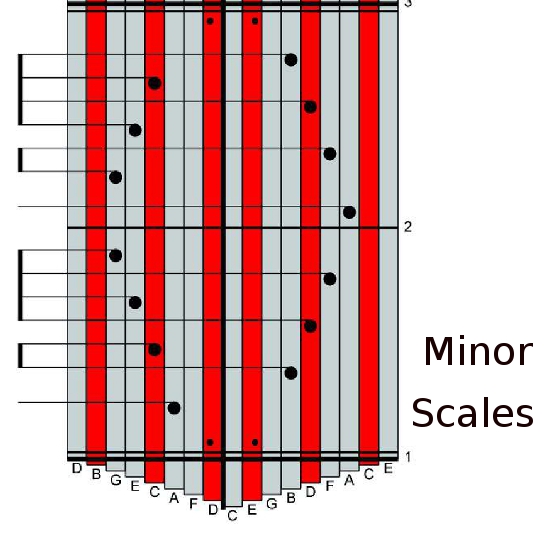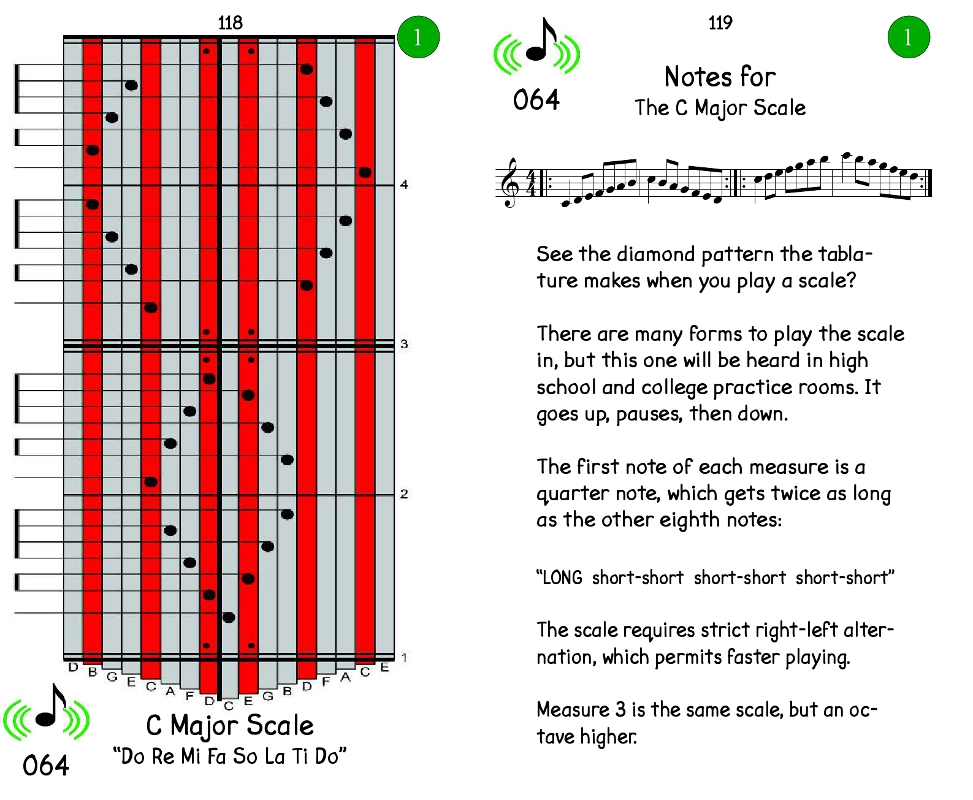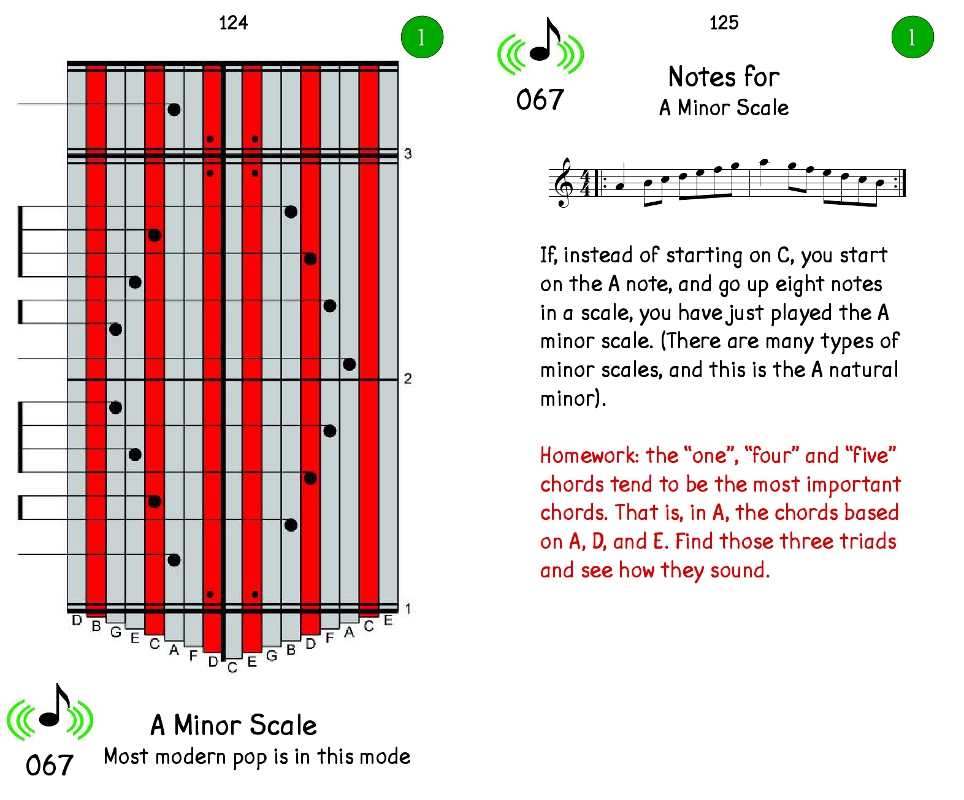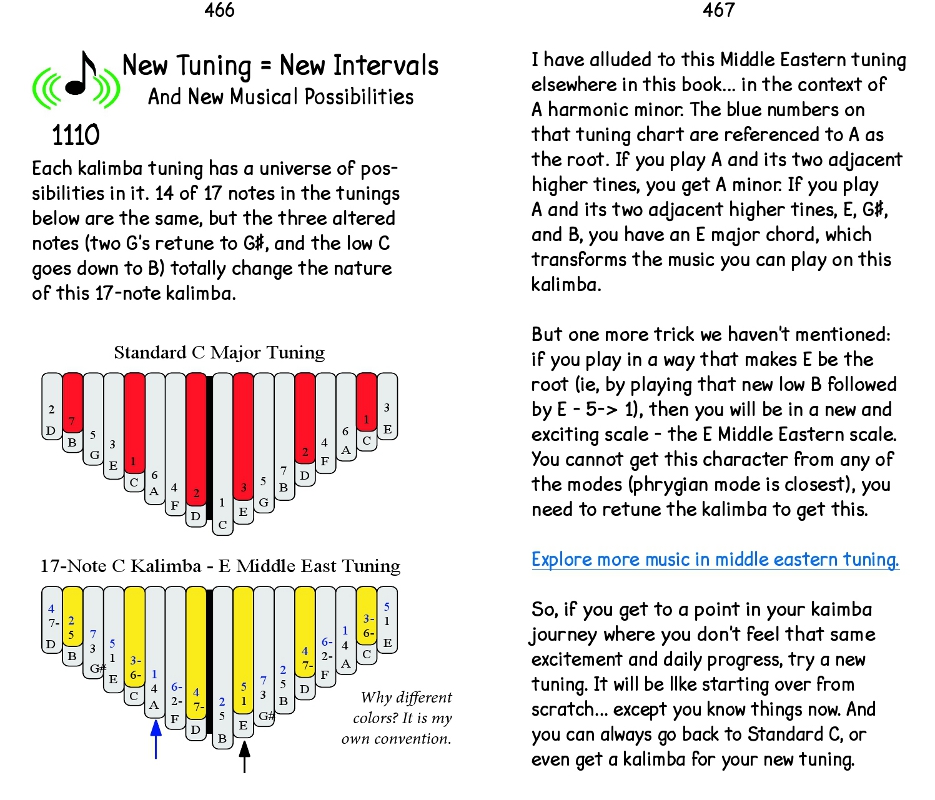
Use of this website constitutes acceptance of the Privacy Policy and User Agreement. Copyright © 2020 Kalimba Magic. All Rights Reserved.
Most kalimbas sold today are in the key of C Major – and yet, most pop music today uses minor scales. That just means, you should check out the minor scales, they will open a whole new world of music to your kalimba playing.
Each scale has its own sound. The scale sort of sets up the shape of the musical universe that a kalimba inhabits… it shows you something of the sort of music that the kalimba creates. And it turns out that each kalimba has multiple scales. On top of that, we at Kalimba Magic can put any scale onto any kalimba (well, within certain limits).
On most kalimbas, you ascend the scale by alternating left, right, left, as you go from inner tines to outer tines, not skipping any tines. On tablature, it looks like you are zig-zagging across the tines:

They can be sweet but melancholy, moody and mystical. They have their own emotional space. They take you places that major scales cannot take you. And if you are looking to get away from that super-happy-go-lucky kalimba ting-tang sound, the minor scales should be your first stop.
Watch this video to understand a bit of what is possible with the minor scales:
17-Note Kalimba in Middle Eastern Tuning
Star-13 Kalimba in A Harmonic Minor Tuning
More explanation of the C Major Scale, the A Minor Scale, and the A Harmonic Minor (or Middle Eastern) Scale can be found in the pages of “365 Days to Kalimba Mastery” – probably the best instructional resource available for the serious kalimba player. We reproduce some of the pages from this resource below:



These pages came from the “365 Days to Kalimba Mastery, Volume I”


Sign up for our newsletter and free resources with your email address:
We pinky promise not to spam you and to only send good stuff.
 Assist Paul Tracey Rebuild His House in Pacific Palisades
Assist Paul Tracey Rebuild His House in Pacific Palisades 8-Note Spiral Kalimba Turned into a Student Karimba
8-Note Spiral Kalimba Turned into a Student Karimba Seek to Infuse Your Musical Moments With Beauty and Magic
Seek to Infuse Your Musical Moments With Beauty and MagicUse of this website constitutes acceptance of the Privacy Policy and User Agreement. Copyright © 2020 Kalimba Magic. All Rights Reserved.